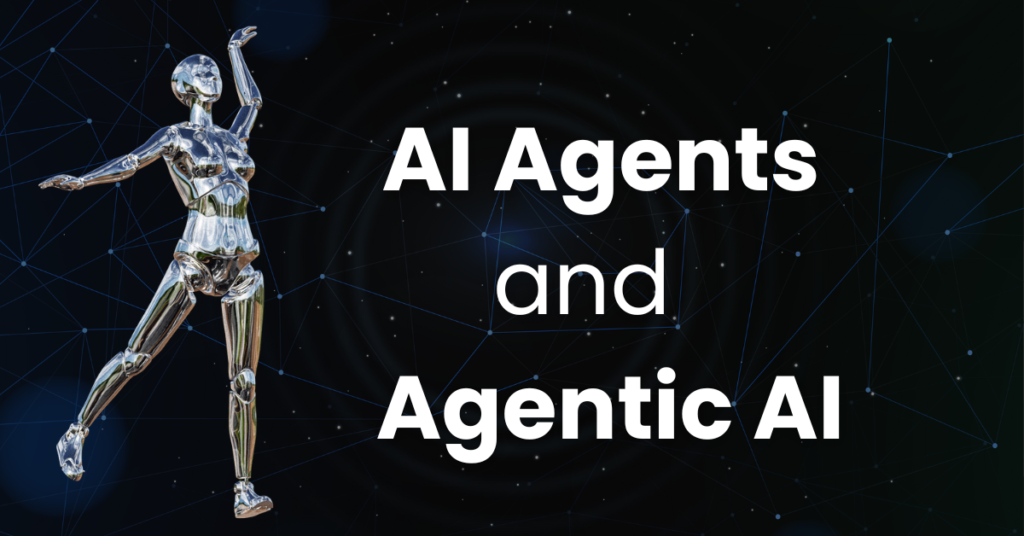AI Agents and Agentic AI: What are types of Agents in AI & AI Agents Examples?
Introduction: The Rise of Agentic AI in a Gen AI World
Have you ever wondered how AI systems can make decisions, learn from their environment, or even plan and act like humans? That’s where AI agents and the concept of Agentic AI come into play.
As Gen AI continues to evolve, we’re moving from static, rule-based AI to more agentic systems that can act independently and adaptively. For professionals in Data Science, understanding types of agents in AI is now essential, not optional.
Pain Point: Most beginners and even some experienced professionals struggle to understand how AI can act autonomously. This blog will simplify that for you and guide you on how to use this knowledge to choose a career in AI.
What is an AI Agent?
An AI agent is an entity that perceives its environment through sensors and acts upon it using actuators to achieve a goal. It can be a robot, a chatbot, a recommendation engine, or even a self-driving car.
Key Features of AI Agents:
- Autonomy: Acts independently
- Reactivity: Responds to environment changes
- Proactivity: Takes initiative
- Social Ability: Interacts with humans or other agents
What is Agentic AI?
Agentic AI refers to AI systems that exhibit goal-directed behavior, decision-making ability, and long-term planning without direct human intervention. Think of them as “goal-setters” and not just “task-doers.”
Types of Agent in AI

Understanding the types of agent in AI is crucial to building smarter systems. Here are the main types:
1. Simple Reflex Agents
These agents operate on the basis of condition-action rules. They respond directly to environmental inputs without considering the history or future consequences.
Example: A thermostat turns the heater on when the temperature drops below a set point and off when it rises above.
2. Model-Based Reflex Agents
These agents are an improvement over simple reflex agents because they maintain an internal state. This internal state is a model of the world that reflects the unobserved aspects of the current environment.
Example: A vacuum cleaner robot that remembers where it has already cleaned to avoid going over the same area repeatedly.
3. Goal-Based Agents
These agents make decisions by evaluating possible future actions against a goal.
Example: A pathfinding robot uses a map and goal destination to plan its route, adjusting its path dynamically based on obstacles or real-time input.
4. Utility-Based Agents
These agents not only work towards a goal but also consider the best way to achieve it by maximizing a utility function.
Example: AI in game engines evaluates multiple moves and selects the one with the highest probability of winning or providing maximum reward based on utility values.
5. Learning Agents
These agents improve their performance over time by learning from their interactions with the environment.
Example: ChatGPT improves by training on diverse datasets and feedback.
Actionable Insight: Mastering types of AI agents is essential for roles in Data Science, AI, and Machine Learning.
Real-Life AI Agents Examples
- Siri/Alexa (Goal-Based Agent)
- Tesla’s Autopilot (Learning Agent)
- Netflix Recommendation System (Utility-Based Agent)
Conclusion
Understanding AI agents and the types of agent in AI is not just academic, it’s the foundation for the future of Agentic AI. Whether you’re a budding Data Scientist, an AI Engineer, or just exploring Gen AI, mastering these concepts gives you an edge.
Take your first step today by choosing the right role and following the roadmap. And if you’re looking for structured guidance, INTTRVU.AI expert-led programs are a great place to start.
FAQs on AI Agents and Agentic AI
The structure of agents in AI typically includes:
- Sensors: To perceive the environment.
- Actuators: To take actions in the environment.
- Agent Function: Maps perceptions to actions.
Performance Measure: Evaluates how well the agent is doing.
This modular structure enables agents to adapt and act intelligently across environments.
While AI agents are categorized by function, AI as a field can be divided into these types:
- Reactive Machines
- Limited Memory
- Theory of Mind
- Self-aware AI
- Artificial Narrow Intelligence (ANI)
- Artificial General Intelligence (AGI)
- Artificial Superintelligence (ASI)
Understanding these helps distinguish agentic AI from traditional rule-based systems.
A learning agent in AI is one that improves its performance over time through experience. It consists of:
- Learning Element: Improves the agent’s behavior.
- Critic: Evaluates performance.
- Performance Element: Chooses actions.
- Problem Generator: Suggests exploratory actions.
Examples include autonomous vehicles and conversational AI like ChatGPT.
Here are a few ai agents examples:
- Siri and Alexa – Goal-Based Agents
- Tesla Autopilot – Learning Agent
- Google Maps – Model-Based and Goal-Based
- Netflix Recommendation System – Utility-Based Agent



